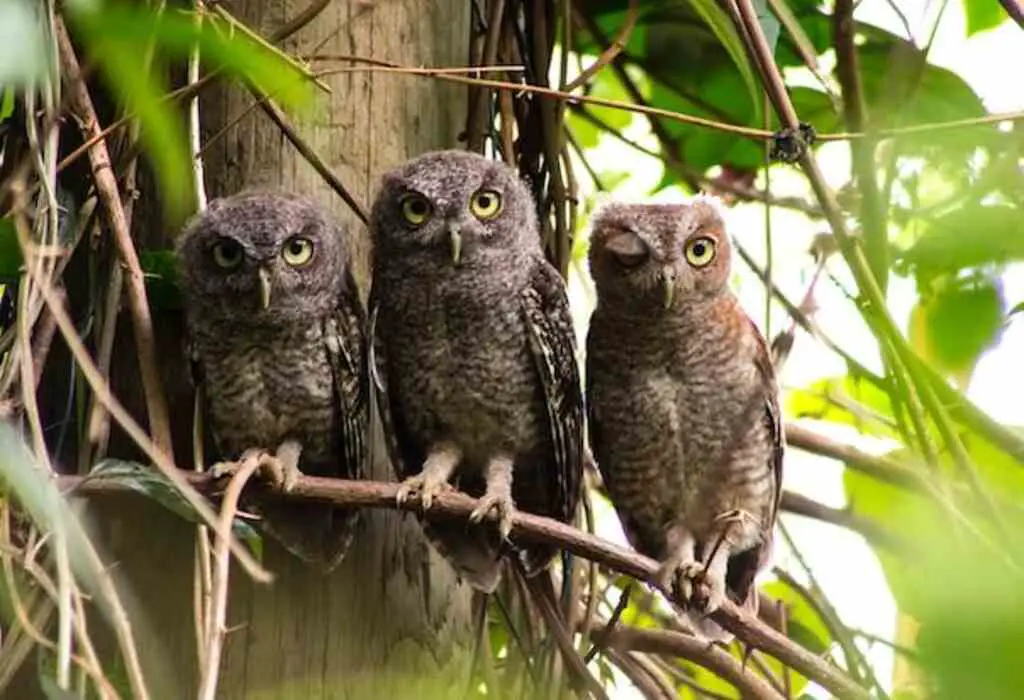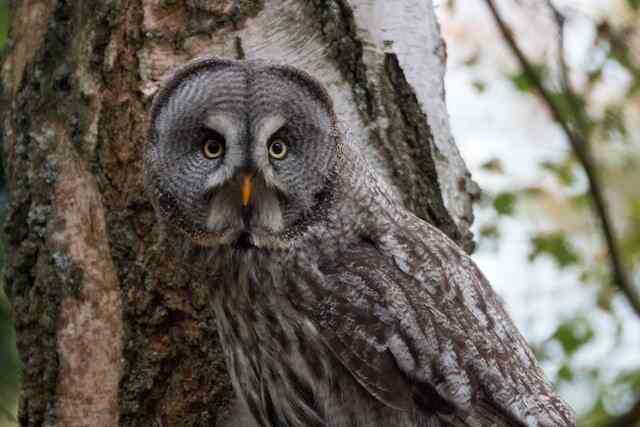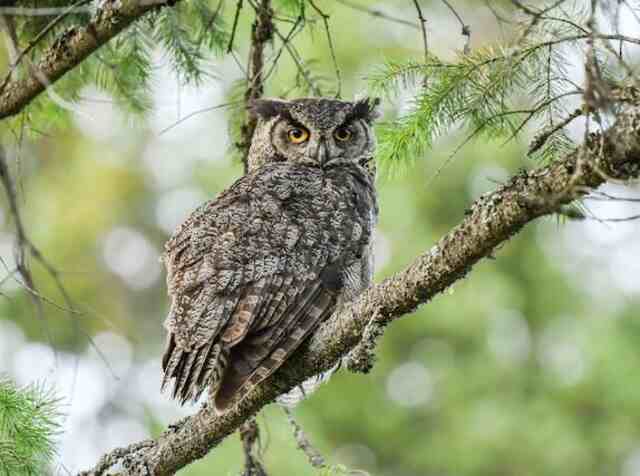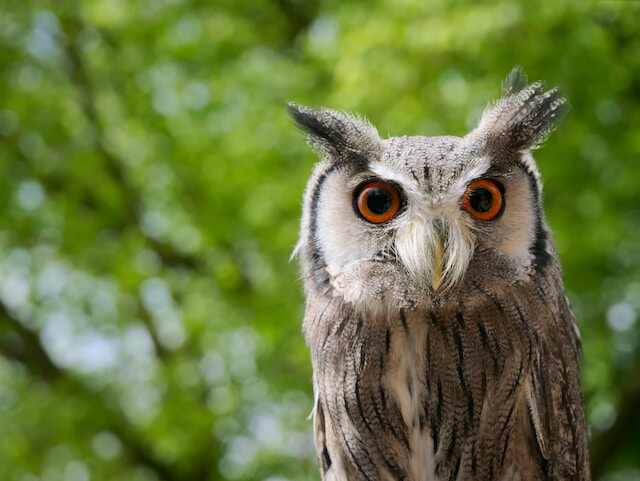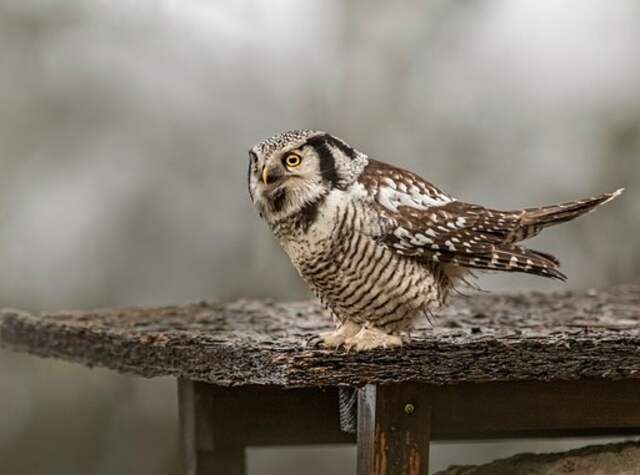When Do Owls Mate? The short answer: it varies according to the species. But wait, before you close this tab, did you know that some owls serenade their potential mates with romantic hoots?
Or that others go on elaborate gift-giving missions? Get ready to discover the fascinating world of owl courtship and find out when your favorite owl species gets frisky.
In this article, we’ll explore the fascinating and complex world of owl mating rituals, including the different factors that influence their breeding habits. Get ready to discover some hoot-worthy secrets!
Table of Contents
- 1 Definition of Owls
- 2 Importance of Understanding Owl Mating Habits
- 3 Overview of When Owls Mate
- 4 Factors That Influence Owl Mating
- 5 Mating Rituals Of Owls
- 6 Types of Owls Mating Systems
- 7 Owl Breeding Season by Species
- 8 The Owl Reproduction Process
- 9 Challenges Faced by Owls During the Breeding Season
- 10 Summary of Important Points Discussed
- 11 Conclusion
- 12 Author
Definition of Owls
The Strigiformes order is comprised of birds of prey that are commonly known as owls. They are characterized by their unique physical features such as large heads, sharp talons or claws, and forward-facing eyes.
Their eyesight is one of the best among all animals; they can see in low light due to their large pupils and tapetum lucidum , which enhances their vision at night.
Owls come in different sizes ranging from the smallest owl in the world, the Elf Owl (Micrathene whitneyi) which weighs less than 50 grams to the largest owl in North America, the Great Gray Owl (Strix nebulosa) which can weigh up to 1.4 kg.
Importance of Understanding Owl Mating Habits
Understanding owl mating habits is crucial to conservation efforts for these birds due to habitat loss and other factors that threaten some species populations worldwide.
Studying owl breeding patterns also helps biologists understand avian reproductive behavior, as well as its function within ecosystem food webs.
Owl mating patterns differ from one species to another depending on several factors including location, climate conditions , food availability , territory size , and nesting resources.
Identifying these factors assists conservationists in predicting future breeding success rates for specific species within certain habitats.
Overview of When Owls Mate
Owls do not have a defined mating season as it varies based on species, geographic location, and food availability. While some species may mate during winter months, others may begin breeding earlier in warmer regions with abundant year-round food, while others may wait for spring.
The breeding season for most owl species generally lasts between 3-5 months, making it longer than many other birds.
Conservation biology efforts can benefit from a better understanding of owl mating habits to manage and protect these remarkable birds for future generations.
Factors That Influence Owl Mating
Seasonal Changes
One of the most influential factors in determining when owls mate is seasonal changes. As the seasons change, so to do the environmental conditions that affect owl behavior, including mating.
Depending on the species of owl, mating may occur at different times of the year in response to shifts in weather patterns and daylight hours.
For example, Great Horned Owls typically mate during the winter months because they prefer cooler temperatures for breeding, while Barn Owls tend to mate during spring and early summer when food sources are more plentiful, and temperatures are warmer.
Food Availability
Another significant factor that can influence owl mating is food availability. Since hunting for prey can be time-consuming and energy-intensive, owls need to ensure they have an ample supply of food before beginning to breed.
For instance, if a particular species of owl relies heavily on small mammals as their primary food source but has experienced a decline in their population due to environmental factors or human activity, this could delay or alter the timing of mating behavior.
When prey populations are low or scarce over an extended period it may lead to delayed breeding since both males and females may not have enough energy needed for reproduction.
Territory and Nesting Availability
Territory also plays a vital role in determining when owls mate. Each species has its own unique nesting preference— some prefer natural cavities like tree hollows while others use abandoned nests from other birds—and will defend their territory against intruders.
The competition for nesting sites can cause delays in breeding if suitable territories become scarce. Owls need enough space between each couple for successful breeding without interference from other pairs near them.
Additionally important is finding locations away from noise pollution such as highways or construction sites which may cause disturbances leading to aborted mating attempts by scaring off one of the mating pairs.
Overall, understanding the various factors that influence owl mating is essential for conservation efforts and ensuring these magnificent birds have a healthy population.
By carefully monitoring environmental conditions and implementing breeding programs as needed, we can help these incredible creatures thrive for generations to come.
Mating Rituals Of Owls
Courtship Displays
Owls have distinctive courtship displays that are used to attract a partner. These displays can range from simple head movements and calls to elaborate dances and aerial acrobatics. Some owl species perform synchronized dances with their partners during the courtship period.
One such example is the Great Gray Owl, which performs an impressive dance on the ground with its partner, complete with bobbing, bowing, and hooting.
Vocalizations
Vocalizations play a crucial role in owl mating rituals. Both male and female owls use a variety of calls to communicate with each other during courtship.
The vocalizations serve different purposes such as attracting a mate or defending territory. One of the most common vocalizations is the “hoo” call that is associated with many owl species.
Owls also produce other sounds like hissing, screeching, trilling, clucking or clicking noises during courting periods. For instance, Barn Owls make hissing noises while Screech Owls produce soft trills when communicating with their mate.
Nest Building
Nesting habits differ among various species of owls, but most of them select natural cavities or abandoned bird nests in trees for nesting purposes. During courtship seasons, both male and female owls participate in nest building activities by bringing materials like twigs and leaves to build or renovate their nest.
In some cases, males may bring prey as offerings for females to demonstrate their ability to provide food for a family after mating successfully.
The nests are usually built in places where they can find optimal conditions for incubation such as protection from extreme weather conditions or predators.
The Importance Of Mating Rituals To Owl Populations
Mating rituals are critical for maintaining healthy populations of owls. Male and female owls that participate in courtship displays, vocalizations, and nest-building activities are more likely to pair up successfully and produce offspring.
Understanding the mating rituals of owls can help us understand when they mate, where they mate, and what factors affect their breeding success. This knowledge can then be used to design conservation strategies that are aimed at protecting owl populations.
The courtship displays, vocalizations and nest building activities of owls are fascinating behaviors that play a crucial role in ensuring their survival. By understanding these mating rituals better, we can help protect these magnificent creatures for generations to come.
Types of Owls Mating Systems
Owls, like many other bird species, exhibit a variety of mating systems. The three main types are monogamous pairs, polygynous males, and polyandrous females.
These different mating systems serve different purposes and depend on a variety of factors such as food availability, nesting sites, and competition for mates.
Monogamous Pairs
Monogamy is the most common owl mating system, in which an individual owl forms a lifelong bond with one partner during the breeding season. The pair will mate exclusively with each other and work together to raise their young until they are old enough to leave the nest.
Monogamous pairs are often found in species that require long-term cooperation between both parents to successfully rear their offspring.
Many owl species exhibit monogamy, including Barn Owls and Screech Owls. These owls will typically establish territories together and defend them against other owls or potential predators.
Polygynous Males
In polygynous mating systems, one male mates with multiple females during the breeding season. This type of system is often seen in species where males have exclusive access to valuable resources such as food or nesting sites.
Male Great Horned Owls are known for their polygyny behavior, where they will mate with several females at once.
During the breeding season, male Great Horned Owls will establish territories around prime hunting grounds and then attract multiple female partners within these territories.
Polyandrous Females
Polyandry is when one female mates with multiple males during the breeding season. This type of mating system is less common among owls, but does occur in some species, such as long-eared owls and Northern Saw-whet Owls.
In this type of system, females may mate with several males over the course of a breeding season and then lay eggs in multiple nests.
Each male will then take care of the eggs and young in their nest, allowing the female to mate with other males and lay more eggs.
Understanding the different types of owl mating systems can provide valuable insights into how these birds interact with each other during the breeding season.
Factors such as food availability, nesting sites, and competition for mates all play a role in determining which type of mating system a particular species will exhibit.
By studying these behaviors, researchers can gain a better understanding of how to conserve owl populations and protect their habitats.
Owl Breeding Season by Species
Barn Owls – January to June
Barn owls, also known as the ghost owl, are nocturnal birds of prey that belong to the Tytonidae family. These owls have a unique breeding season that starts in January and lasts until June. During this period, barn owls become more active in terms of mating rituals and nest-building activities.
Females typically lay eggs between March and April, with incubation lasting up to 34 days. After hatching, chicks are entirely dependent on their parents for food and protection for the first few months of their lives.
Interestingly, barn owls are monogamous birds that usually mate for life. They form strong partnerships with each other during the breeding season and work together to raise their young.
Great Horned Owls – December to February
Great horned owls are one of the most common owl species found in North America. Their breeding season occurs during winter from December until February, when they start displaying courtship behaviors such as hooting calls or elaborate flight displays.
During this time, male great horned owls try to impress females by bringing them food or materials for building a nest. Once a pair is established, they will mate throughout the winter and start building their nest in late January.
Incubation takes approximately 33-38 days; typically two eggs are laid but sometimes up to four may be laid depending on food availability. After hatching, young great horned owl chicks grow quickly; fledging from their nests after 6-7 weeks of age.
Screech Owls – March to May
Screech owls belong to the genus Otus and commonly inhabit wooded areas throughout North America. Their reproductive cycle takes place between March and May each year when they actively engage in mating rituals such as duetting and courtship displays.
After selecting a mate, they will start building their nests in tree cavities or abandoned woodpecker holes. The female lays 2 to 6 eggs, with incubation lasting around 26 days.
Once the chicks hatch, they are cared for by both parents and will leave the nest approximately four weeks after hatching. Screech owls are known to be monogamous birds that often mate for life.
The breeding season of owls varies greatly between species depending on factors such as climate and food availability. Understanding the reproductive cycle of these birds is essential for conservation efforts aimed at protecting their populations and habitats.
The unique mating habits of each species highlight just how intricate and fascinating owl behavior can be, with each having a special place in maintaining ecological balance.
As we learn more about these beautiful creatures, we can make better-informed decisions when it comes to preserving their environment for future generations to enjoy.
The Owl Reproduction Process
Egg Laying and Incubation Period
Once mating occurs, the female owl will lay her eggs in a nesting cavity or platform. The number of eggs laid varies with species and environmental conditions, but can range from one to a dozen.
The eggs are white, round, and about the size of a ping-pong ball. Female owls typically lay one egg every two to three days until their clutch is complete.
After laying the eggs, the female begins incubating them to keep them warm and promote embryo development. During this period, which ranges from 21 to 37 days depending on species, she will sit on the eggs almost continuously while the male brings her food.
Chick Development and Growth Stages
When hatching time approaches, tiny cracks begin to appear on each egg’s surface as the chicks peck through their shells using their egg teeth- small bumps located on each chick’s bill. Once hatched, chicks are covered in downy feathers that insulate their bodies.
The young are entirely dependent on their parents for food during this time as they cannot regulate their body temperatures or fly.
Nestlings feed frequently- up to several times an hour- and grow exponentially during this period. Their eyes remain closed for roughly ten days after hatching.
As they grow larger, they develop juvenile feathers that replace their fluffy down as they prepare for fledging. Fledging occurs when young owls leave the nest for good and begin learning how to hunt with help from their parents.
The Importance of Understanding Owl Reproduction
Understanding owl reproduction is critical because it helps researchers monitor owl populations’ health by identifying any reproductive problems that may arise due to habitat loss or environmental factors such as climate change.
Studying chick development can also provide valuable information about how different species respond to changes in their natural habitats. Owls are critical to the ecosystem as they control rodent populations, and humans have come to appreciate them as a symbol of wisdom and mystery.
However, habitat destruction, pollution, and other human activities threaten owl populations worldwide. Therefore, it is essential that we continue to learn about their reproduction process and work to conserve these magnificent birds for future generations.
Challenges Faced by Owls During the Breeding Season
Predators and Nest Disturbance
During the breeding season, owls face numerous challenges that threaten their survival. One of these challenges is the presence of predators such as hawks, eagles, and snakes.
These predators often target nests containing eggs or young chicks, posing a significant threat to owls’ reproductive success. Additionally, nest disturbance can also occur due to human activities such as logging and construction which can lead to habitat destruction or fragmentation.
Unfortunately, these types of disturbances often lead to displacement or abandonment of owl nests, which can have long-term effects on the species’ reproductive success.
Furthermore, some human activities like urbanization and increasing noise pollution in cities can also be detrimental to owl populations.
Example: When a pair of barn owls abandoned their nest due to human disturbance on an apple orchard in the UK, it led to a significant decline in their breeding success.
Climate Change Effects on Breeding Patterns
Climate change is another challenge that affects owl populations during breeding season. Changes in weather patterns such as increased droughts or heavy rainfall events result in changes in temperature and precipitation patterns, which can affect prey availability for owl species. This exerts selective pressure on birds, where individuals with adaptive traits are more likely to survive.
Some species like Snowy Owls have been observed moving further north than usual during winter seasons since global warming has created warmer temperatures even at high latitude regions, making it difficult for them to find prey due to lack of snow cover.
Moreover, climate change has been observed affecting migratory behaviors of bird species including owls which migrate within different parts of North America depending on the season.
Migratory birds rely heavily on environmental cues when deciding when and where they should migrate; however climate change creates unpredictable variations in environment and thereby causes confusion in their migratory pattern.
This results in birds arriving too early or too late to suitable nesting sites, ultimately affecting their breeding success. Example: Long-eared owl populations declined in some areas of the UK after a series of mild winters resulting from climate change.
The challenges faced by owls during the breeding season are complex and varied. It is important to monitor these impacts closely and implement conservation efforts that can mitigate any potential negative effects on owl populations’ reproductive success.
Conservation Efforts for Owl Populations
There are several key conservation efforts aimed at mitigating the negative impacts of human activities on owl populations. Habitat preservation is one such effort that helps protect nesting sites and ensure adequate food supply for owls.
Additionally, research programs have been launched to more accurately assess population numbers and breeding success rates across various species. Furthermore, education about proper nest box placement can help mitigate nest disturbance caused by human activities like construction and logging.
Additionally, increasing awareness about the role owls play in maintaining ecological balance can generate support for conservation efforts among policymakers and general public alike.
Overall, it is necessary for us to protect these magnificent birds’ habitat so they continue to thrive not just during breeding season but throughout their life cycle so future generations can enjoy watching them glide through starry nights.
Summary of Important Points Discussed
Throughout this article, we have discussed the mating habits of owls, focusing on the factors that influence their breeding and reproduction processes.
We have explored the different types of owl mating systems and their reproductive stages, as well as the challenges that they face during breeding season.
Understanding these aspects is crucial in protecting and maintaining healthy owl populations around the world.
Importance of Conservation Efforts for Owl Populations
Owls play an essential role in maintaining ecological balance by being top predators that help control rodent and insect populations.
Unfortunately, many species are threatened due to habitat destruction, pollution, and illegal hunting practices. Therefore, conservation efforts are vital to ensure the survival of these fascinating creatures.
One way to contribute to conservation efforts is by supporting organizations dedicated to preserving owl habitats worldwide.
These organizations aim at creating safe spaces for nesting and roosting places, monitoring population numbers, studying behavior patterns to prevent harm from humans, addressing climate change effects on breeding patterns among other initiatives.
Challenges Faced by Owls During Breeding Season
During breeding season, owls face numerous challenges that threaten their reproductive success. Predators such as larger raptors or mammals may attack nests or steal food sources, leading young owlets vulnerable or even dead, resulting in population decline over time if not checked early enough.
Moreover, human disturbance can be a significant threat during breeding season since noise pollution can deter nesting areas while commercial logging and deforestation lead to habitat loss over time.
Conclusion
Owls are fascinating creatures with unique mating habits that need our attention in regard to conservation measures undertaken for their survival.
By understanding how they mate and adapt during this critical period helps protect them from threats such as habitat loss or disturbance during nesting seasons.
It’s our responsibility to work towards creating awareness among communities about protective measures and supporting conservation efforts that help maintain healthy populations of these majestic birds worldwide.

